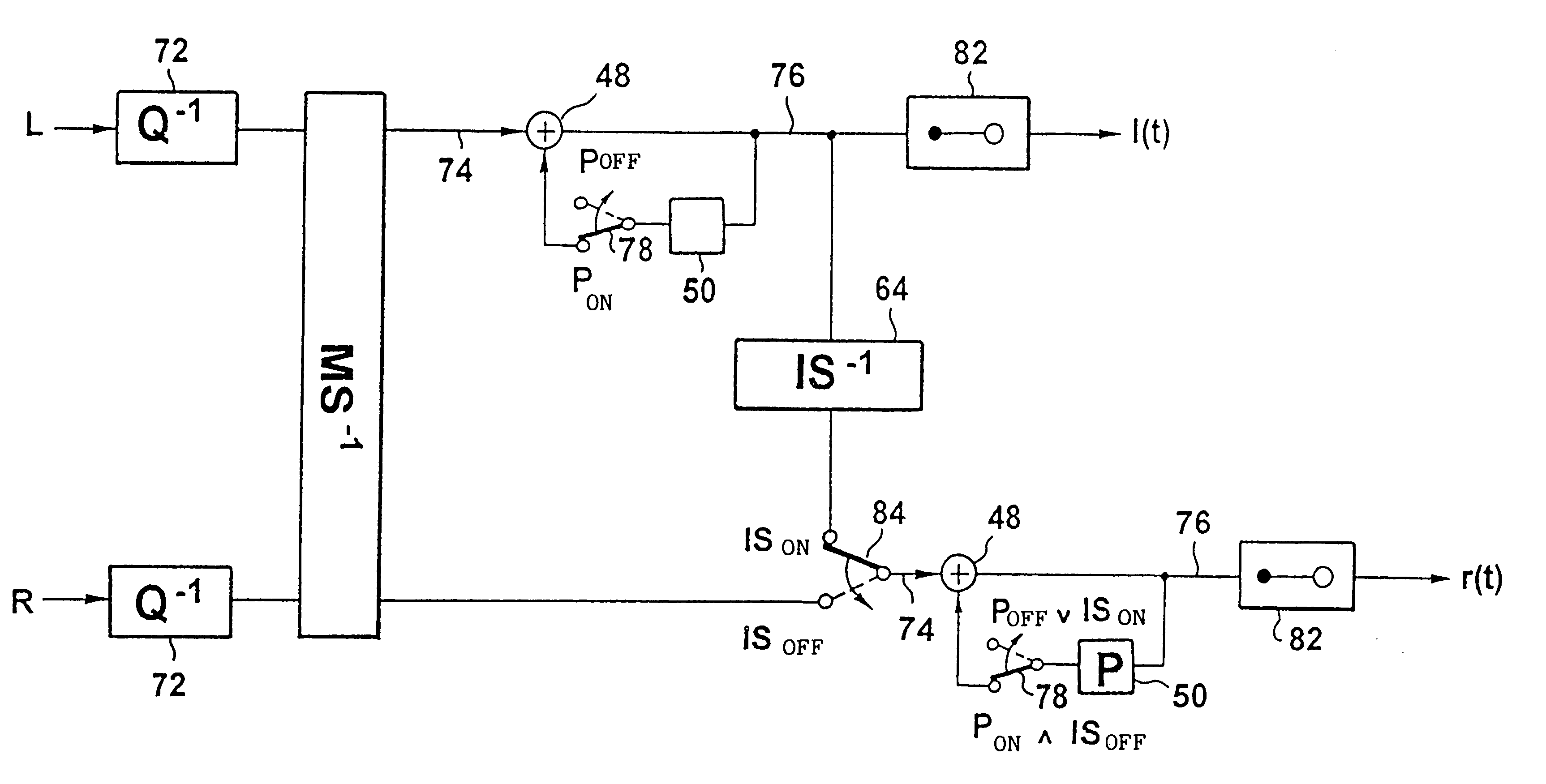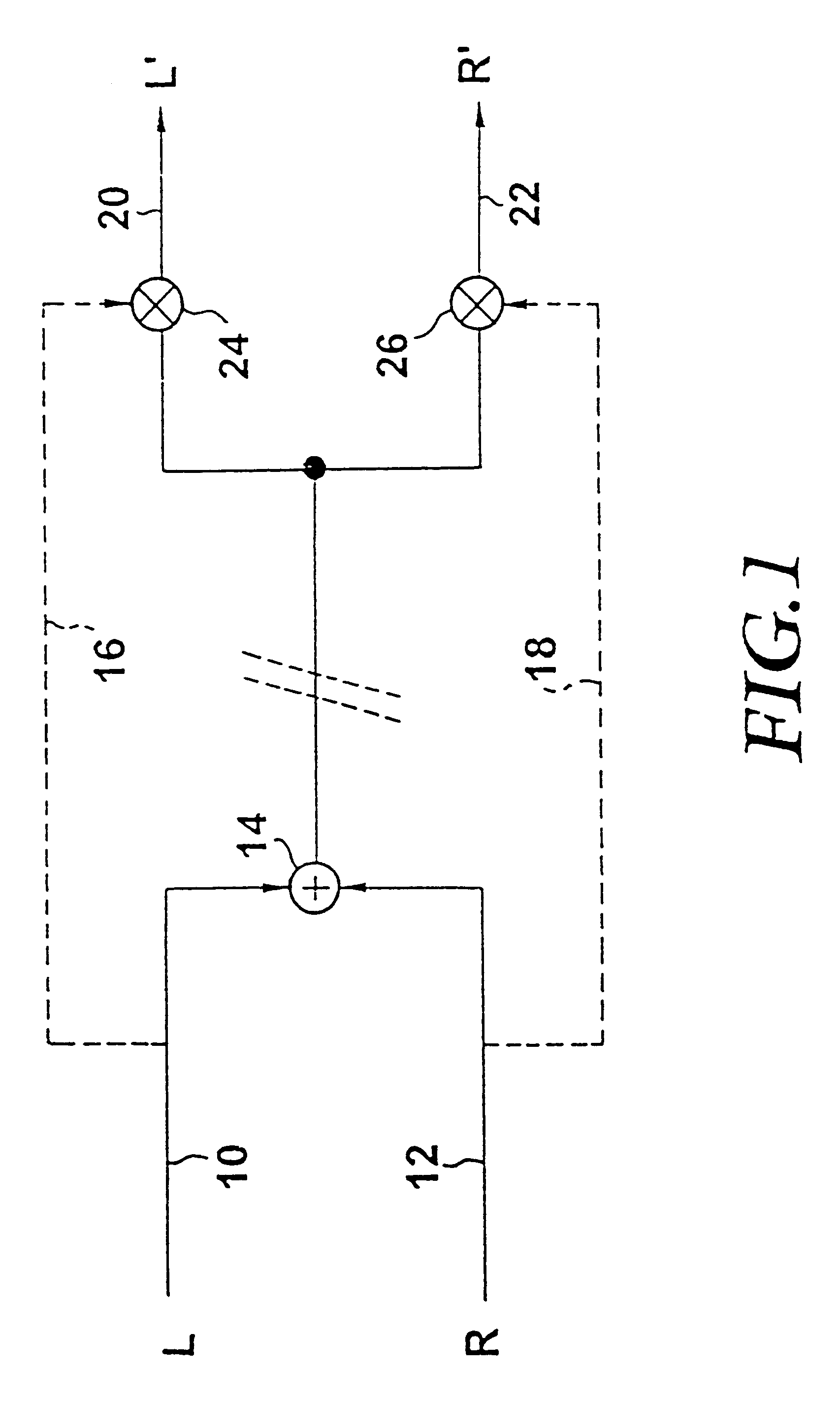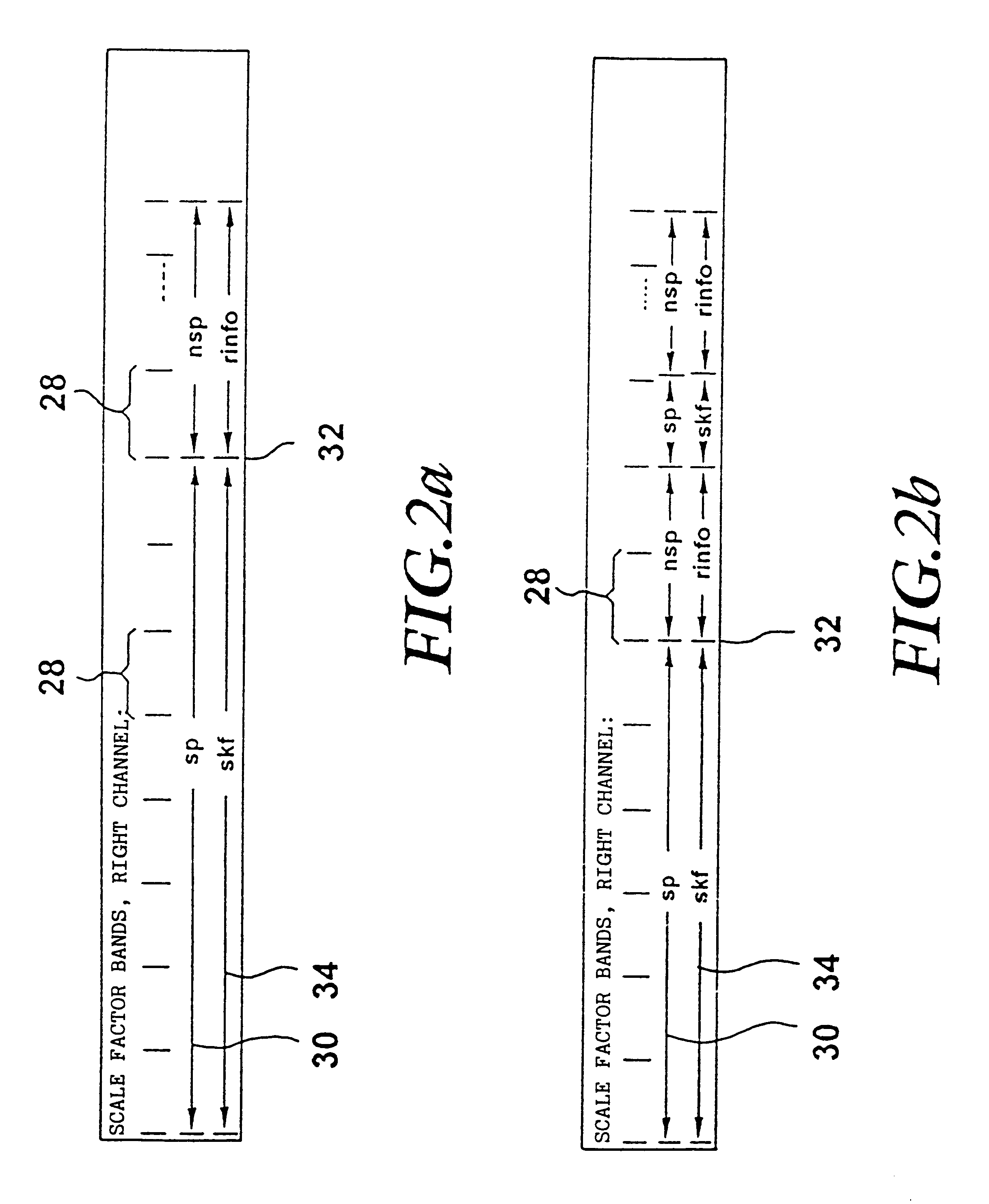Coding and decoding of audio signals by using intensity stereo and prediction processes
- Summary
- Abstract
- Description
- Claims
- Application Information
AI Technical Summary
Problems solved by technology
Method used
Image
Examples
Embodiment Construction
FIG. 2b shows a format of the data for the right channel R with stereo intensity coding using the MPEG2-NBC process. The difference from FIG. 2a or the MPEG Layer 3 process is that a user of the MPEG2-NBC process has the flexibility, selectively to connect or disconnect intensity stereo coding of the stereo audio spectral values for a respective section, i.e. a group of at least one scale factor band, even above the IS frequency limit 32. Thus the IS frequency limit is not actually a true frequency limit compared to MPEG Layer 3, as the IS coding can be disconnected or connected again even above the IS frequency limit in the NBC process. This was not possible with Layer 3, i.e. when IS coding was present for a section it was essential for the stereo audio spectral values above the IS frequency limit to be IS coded right to the top of the spectral range. The new NBC process need not activate IS coding for the whole spectral range above the IS limit; it allows IS coding to be disconne...
PUM
 Login to View More
Login to View More Abstract
Description
Claims
Application Information
 Login to View More
Login to View More - R&D Engineer
- R&D Manager
- IP Professional
- Industry Leading Data Capabilities
- Powerful AI technology
- Patent DNA Extraction
Browse by: Latest US Patents, China's latest patents, Technical Efficacy Thesaurus, Application Domain, Technology Topic, Popular Technical Reports.
© 2024 PatSnap. All rights reserved.Legal|Privacy policy|Modern Slavery Act Transparency Statement|Sitemap|About US| Contact US: help@patsnap.com










